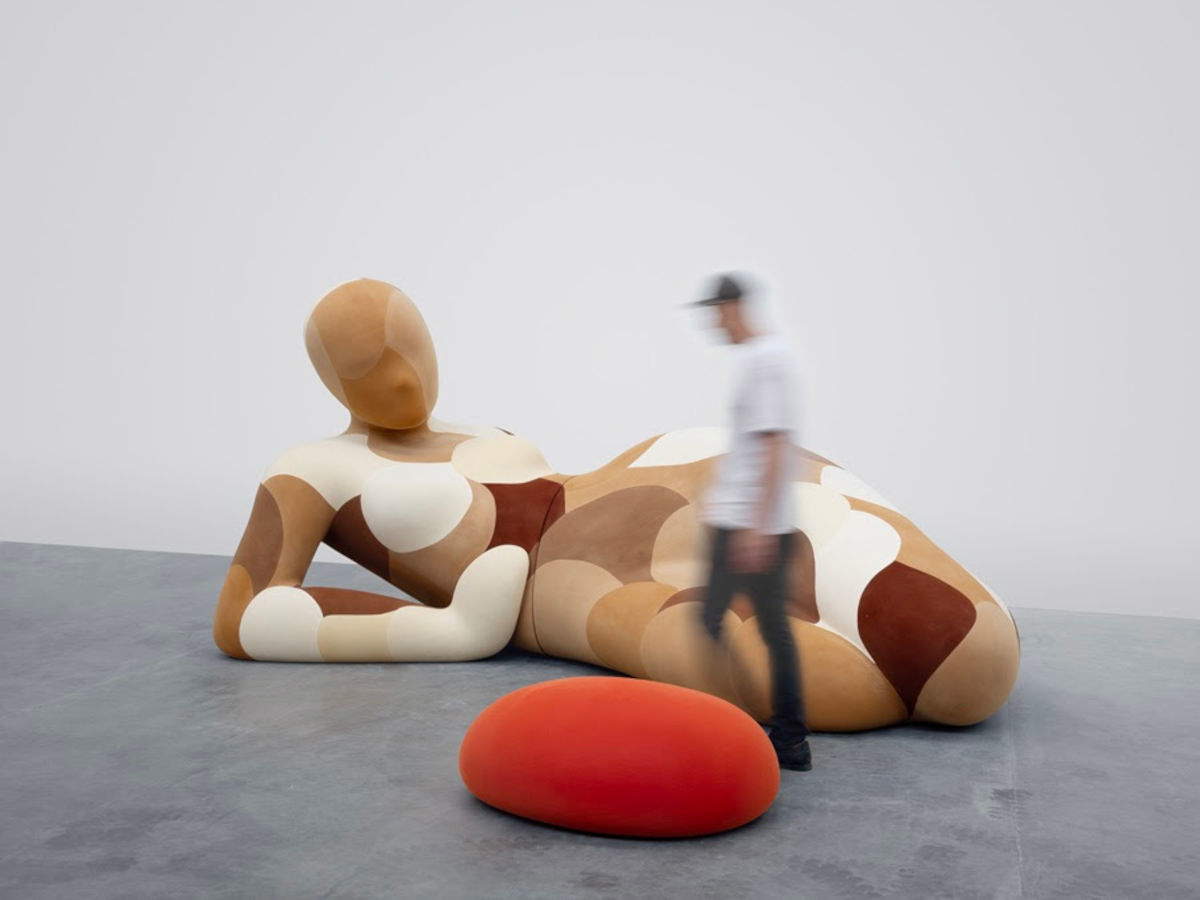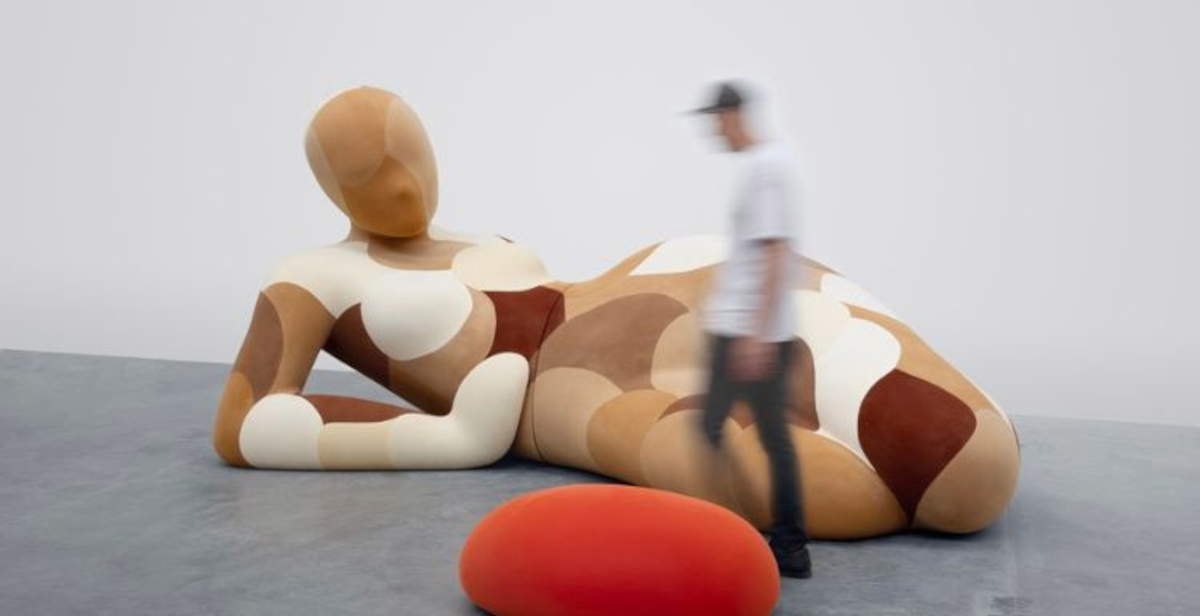In Rome, Gagosian Roma Gallery hosts 2025 After Nature from Sept. 17 to Nov. 22, an exhibition featuring eight new paintings from the Dust Paintings series, a large-scale soft sculpture and an interactive video installation by Urs Fischer (Zurich, 1973). The Swiss artist, known for his innovative use of materials and his exploration of themes related to perception and representation, proposes in the exhibition a direct intervention on the transformation of objects and the interpretation of space, combining historical and technological references from a contemporary perspective.
The exhibition presented in Rome picks up the thread of works created between 2007 and 2010 and explicitly recalls Man Ray’s photograph Dust Breeding (1920), which documents the accumulation of dust on the surface of Marcel Duchamp ’s work The Bride Stripped by Her Bachelors, Even (1915-1923). The new panels are made on aluminum with dust collected from the floor of the artist’s studio and show a more artisanal look than their predecessors. The partially silkscreened images reflect the gallery’s interiors and exteriors, and the irregular distribution of particles evokes scenery that oscillates between desert landscapes and starry twinkles. In this way, Fischer constructs a mesoscopic scale that links microscopic phenomena to macroscopic dimensions, expanding the perception of matter and space.
Next to the paintings, a soft sculpture depicts a reclining female figure covered in a brown camouflage pattern. Two amoebic, red-orange pouf-like forms accompany the main figure, suggesting a simultaneously aesthetic and functional interpretation: viewers can sit on them, transforming contemplation into a bodily experience. Fischer defines the work as an embodiment of gravity, a static point of attraction within the exhibition space. The sculpture is also reminiscent of She-A Cathedral (1966) by Niki de Saint Phalle, Jean Tinguely, P.O. Ultvedt and Pontus Hultén at the Moderna Museet in Stockholm, where the hollow female figure on an architectural scale contained a variety of artworks within it.

Fischer’s proposed video installation is inspired by Dan Graham’s Time Delay Room (1974), in which a closed-circuit system between two communicating rooms generates a visual delay in the filming of visitors. In the artist’s version, the delay is five seconds, inducing a reflection on the perpetual present and the reduction of human memory to very short intervals. Viewers observe themselves in near-real time, experiencing a state of controlled self-surveillance and a new awareness of time and perception.
The exhibition After Nature thus represents a coherent continuation of Fischer’s research into themes of transformation, decay and reinterpretation of everyday objects through a technological and conceptual lens. The combination of unconventional materials, historical references and compositional choices aims to stimulate reflection on the relationship between object, viewer and memory. In addition to the exhibition dimension, the exhibition confirms Fischer’s interest in the contamination of disciplines and languages. The dust panels, soft sculpture and video installation dialogue with each other, offering different perceptual experiences that influence each other. In this context, dust recovered from the studio floor becomes a conceptual element that connects artistic production and the surrounding environment.
In addition, from Sept. 18 to Nov. 22, 2025, the Academy of France in Rome - Villa Medici will host Fischer’s sculpture Dance (2025) in its Renaissance gardens, in conjunction with the exhibition After Nature.
 |
| Urs Fischer on display at Gagosian in Rome with his dust paintings and sculptures |
Warning: the translation into English of the original Italian article was created using automatic tools. We undertake to review all articles, but we do not guarantee the total absence of inaccuracies in the translation due to the program. You can find the original by clicking on the ITA button. If you find any mistake,please contact us.